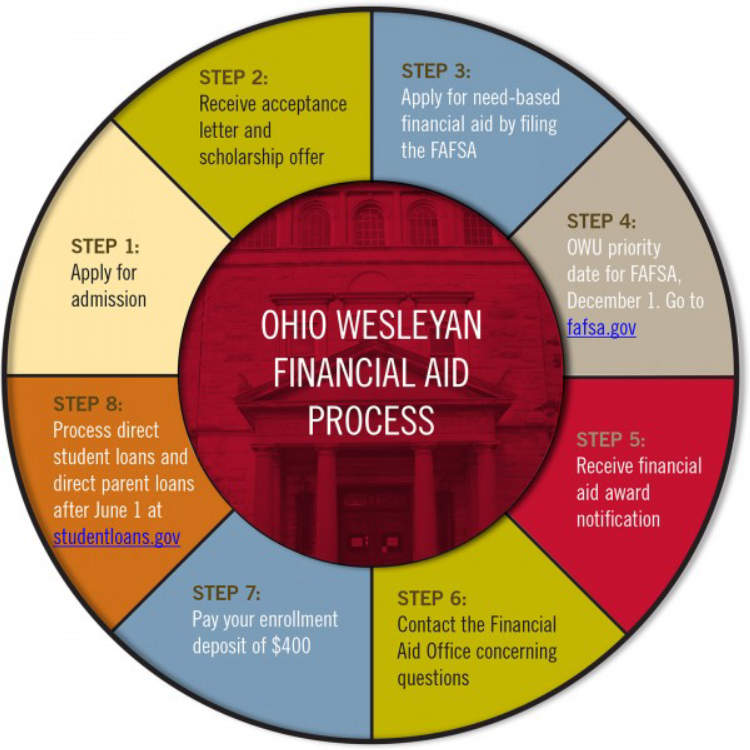Pursuing a college education in the US can be an expensive endeavor for students and families. To help cover educational costs, financial aid is available for those who qualify. Need-based financial aid is the form of financial assistance in the US that is granted to students based on their financial need.
Need-based financial aid can come from a variety of sources, including federal and state governments, colleges, employers, civic organizations, and private entities. To apply for need-based financial aid, students must first complete and submit the Free Application for Federal Student Aid (FAFSA). Based on the information on the FAFSA, students may qualify for grants, scholarships, work-study programs, and loans.
Types of Need-Based Financial Aid in the US
Having a financial need does not necessarily mean you cannot pursue higher education. In the US, there is a variety of need-based financial aids available to college students. Such financial aids help students cover the costly tuition fees and living expenses. Here are the types of need-based financial aid that are available in the US:
- Grants
- Scholarships
- Work-Study Programs
- Student Loans
Grants
Grants are need-based financial aids offered by the federal and state government, or individual colleges. They do not have to be repaid, unlike student loans. To apply for grants, you will need to fill out the government’s Free Application for Federal Student Aid (FAFSA) form. All the information provided in the FAFSA will be used when evaluating your eligibility for grant funds. Federal grants include the Pell Grant and other community grants. Meanwhile, state grants are specific to each state.
Scholarships
Unlike grants, scholarships are merit-based financial aids, although there are some need-based scholarships that you can apply for. Those who have excellent academic performance, extraordinary talents and unique abilities may have a higher chance of winning scholarships. It is also important to note that scholarships may be issued by any individual, organization or company. You will need to research extensively to find out what scholarship suits you best.
Work-Study Programs
Work-study programs are funded by the federal government and are also included in the FAFSA form. In this program, students will beable to work part-time to earn money for college expenses. There are a variety of departments and offices within universities that accept students with work-study programs. The wages earned from this program are subject to federal minimum wage regulations.
Student Loans
Student loans are also referred to as need-based financial aid. This type of loan should be the last resort for college students who are unable to cover tuition fees or other expenses. You can take out a federal loan, a state loan or a private loan. Different loan terms and rates will apply for each type of loan. It is recommended that you carefully read the terms and conditions before taking out a loan. The amount of money you can borrow will depend on your financial need.
How Need-based Financial Aid is Awarded

Need-based financial aid is massive source of financial assistance given to students to help pay for educational expenses such as tuition and other college costs. This type of aid is usually awarded according to the student’s financial need and is often provided by universities and even the government. In order to apply for such financial aid, a student must first complete the Free Application for Federal Student Aid (FAFSA).
Once the form is submitted, the student will be given a calculation of their expected family contribution (EFC) which gives an estimate of their family’s ability to contribute to the student’s educational costs. The EFC is used by universities to determine the level of need-based financial aid the student should receive.
In general, need-based financial aid comes in the form of grants, scholarships or work-study programs. The following summarizes how these forms of aid are awarded:
Grants
Grants, often referred to as ‘free money’, are awarded to students with demonstrated financial need. Grants usually do not require the student to pay them back unless there is a return of funds policy in which the student must repay the grant if they withdraw or fail classes. Most grants are sourced from the federal government or university funds.
Scholarships
Scholarships are usually awarded based on merit or talent and do not usually require the student to demonstrate financial need. Typically, scholarships provide a one-time payment, whereas grants are more likely to be awarded on an ongoing basis for the duration of the student’s studies.
Work-Study Programs
Work-study programs provide part-time jobs for students once they have been accepted to a university. This type of financial aid is need-based and is designed to help students pay their educational expenses. The student can work up to 20 hours a week, and the wage they receive is the same as the federal minimum wage.
Overall, need-based financial aid is essential for many students in the US who would otherwise not be able to afford the tuition and other educational expenses of college. By understanding how the need-based financial aid process works, students can increase their chances of receiving the financial aid they need to pursue a college education.
Application Requirements for Need-based Financial Aid
Need-based financial aid can help cover the cost of college or university tuition, room and board, and other related expenses for those with a limited financial means. But to qualify for this type of aid, you must meet certain application requirements.
Generally, you must submit a Free Application for Federal Student Aid (FAFSA) to apply for need-based financial aid. The FAFSA is used by the U.S. Department of Education to determine your Expected Family Contribution (EFC). If your EFC is lower than the amount of tuition and fees, then you may be eligible to receive need-based aid.
In addition to the FAFSA, you may also need to submit other documents to your school’s financial aid office such as:
- Tax returns or W-2 forms for the past two years
- A copy of bank statements or other records of any investments
- An enrollment status form (if applicable)
- A copy of your driver’s license or state ID (if applicable)
- Proof of any other income (if applicable)
In some cases, you may also need to provide a letter of recommendation from a teacher or guidance counselor that speaks to your academic qualifications and potential for success.
Ultimately, the school you attend will determine the final eligibility requirements for need-based financial aid. Be sure to contact the financial aid office to find out what documents and information they need from you before you submit an application for need-based aid.
Conclusion
Need-based financial aid in the US is an important aspect of higher education, which can help students pay for their tuition and other expenses. Understanding the process of applying and obtaining need-based financial aid is essential for students in order to make sure they are able to receive the financial aid they need to cover their education costs. Additionally, students should also be aware of the different types of financial aid available, such as scholarships and grants, as well as the criteria used by colleges to determine a student’s eligibility for financial aid.
Overall, need-based financial aid in the US is an important tool for students to access higher education, and learners should be informed and proactive in their approach to finding and applying for financial aid packages that can help them meet their educational goals.




